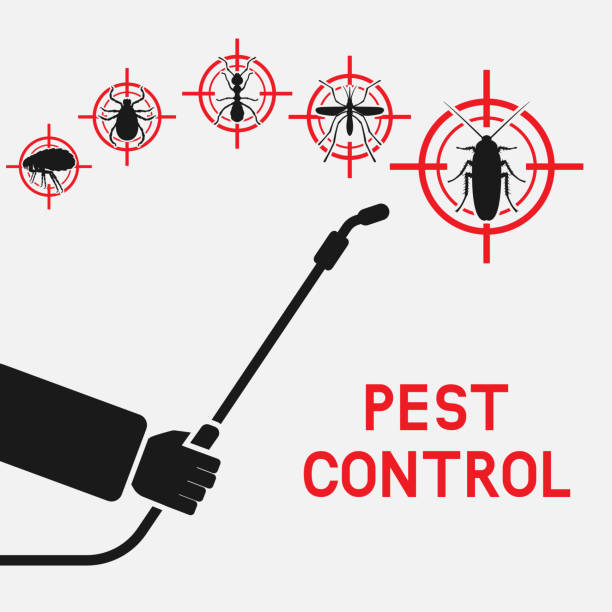Quick Response Times for Pest Issues with Pest Control Lockhart
Quick Response Times for Pest Issues with Pest Control Lockhart
Blog Article
Checking Out Infestation and Therapy Methods on the planet of Parasite Control
The landscape of pest control encompasses a myriad of difficulties, specifically as infestations of typical house insects proceed to develop. By incorporating preventive procedures with sophisticated monitoring strategies, such as Integrated Parasite Administration (IPM), home owners can much better secure their settings.

Common Home Pests
When it comes to managing our space, understanding common home insects is vital. These pests not only interrupt our comfort but can likewise posture health dangers and damages home. The most widespread house pests include ants, cockroaches, rats, termites, and bed bugs.
Ants, often seen foraging in cooking areas, can infect food and establish huge nests. Rodents, including computer mice and rats, can trigger architectural damages and carry illness like hantavirus and salmonella.
Acknowledging the signs of these insects, such as droppings, nests, or bite marks, is necessary for early intervention (Pest Control Lockhart). Proper hygiene techniques, sealing entry points, and preserving a clutter-free setting are reliable preventative actions. By identifying these typical family pests and understanding their behaviors, home owners can take aggressive steps to minimize infestations, ensuring a healthier living environment
Understanding Bug Infestations
Bug invasions can rise rapidly, turning a minor nuisance right into a significant trouble if not dealt with immediately. Common aspects contributing to problems include bad hygiene, architectural susceptabilities, and seasonal changes that drive parasites indoors.
Determining the kind of bug is necessary, as various species exhibit varied actions and reproductive rates. Rats might develop nests in covert locations while bugs like cockroaches prosper in moist atmospheres. Early discovery frequently pivots on identifying indicators such as droppings, gnaw marks, or uncommon noises, which can indicate a trouble before it becomes serious.
Warm, humid environments can promote the quick growth of insect populations, while adjustments in landscaping or building and construction can unintentionally develop favorable atmospheres. An informed strategy to comprehending these dynamics lays the groundwork for efficient bug administration strategies in the future.
Treatment Approaches and Strategies
Reliable therapy approaches and strategies are crucial for mitigating insect infestations and restoring a risk-free atmosphere. A diverse strategy is often best, integrating chemical, biological, and mechanical methods customized to the certain insect and the intensity of the invasion.
Chemical therapies consist of the use of insecticides and herbicides, which can effectively get rid of pests. However, correct application and adherence to safety and security guidelines are essential to minimize dangers to human beings and non-target organisms. Integrated Pest Management (IPM) motivates the cautious use chemicals as a last hotel, relying rather on surveillance and limit degrees to identify treatment demands.
Biological control techniques entail presenting natural predators or bloodsuckers to lower pest populaces. This approach is progressively preferred, specifically in farming setups, as it promotes ecological sustainability.
Mechanical techniques, such as catches and barriers, give immediate relief from pests without presenting chemicals. Alternatives include sticky catches for pests or physical barriers for rodents.
Inevitably, the selection of therapy method must take into consideration the details bug, the atmosphere, and potential influence on human wellness and ecological communities. A balanced mix of these methods can successfully take care of infestations while advertising long-lasting bug control services.
Preventive Actions for Residence
Proactively dealing with parasite problems before they escalate is vital for keeping a healthy home environment (Pest Control Lockhart). Implementing effective safety nets can significantly lower the probability of invasions, ultimately securing both your home and wellness

Appropriate landscape design likewise plays an important function in avoidance. Maintaining hedges and trees cut away from your home reduces the possibilities of pests discovering their way indoors. Make certain that drain systems are functioning efficiently to stop standing water, which can attract in insects and other pests.
Finally, routine inspections are a good idea. Routinely inspecting for indicators of bug activity permits early treatment. By embracing these safety nets, property owners can produce an atmosphere that is less congenial to pests, thus boosting their overall quality of life and decreasing the demand for why not try here considerable insect control interventions.
Industrial Parasite Control Approaches
A comprehensive approach to business insect control is crucial for companies aiming to keep a secure and my response sanitary atmosphere. Reliable approaches entail a mix of routine examinations, staff member training, and the implementation of Integrated Pest Administration (IPM) practices.
Routine assessments enable very early detection of pest activity, permitting for prompt treatment. Organizations need to create a regular timetable for these analyses, concentrating on risky areas such as kitchen areas, storage space spaces, and garbage disposal websites. Worker training is equally vital; team needs to be informed on the signs of parasite problems and the relevance of reporting them promptly.
Carrying out IPM techniques aids reduce insect concerns sustainably. This consists of environment alteration, such as sealing entrance points and decreasing clutter, along with employing all-natural deterrents prior to resorting to chemical treatments.

Furthermore, teaming up with a licensed insect control provider ensures accessibility to professional understanding and sophisticated therapy alternatives. This partnership can bring about customized pest control plans customized to the details needs of business, lessening dangers and improving general efficacy. Eventually, a proactive and educated strategy cultivates a pest-free environment, protecting both public health and wellness and business reputation.
Final Thought
In conclusion, effective parasite control requires a detailed understanding of common house parasites and their actions, you can try these out paired with targeted therapy techniques. Implementing precautionary actions alongside treatment techniques such as Integrated Bug Management and organic control improves the capacity to mitigate infestations.
Report this page